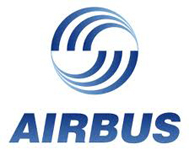CAAC and Quovadis Implement RNP to ILS and Public RNP AR at China's Zhangjiajie Airport

The Civil Aviation Administration of China (CAAC) has recently approved Required Navigation Performance (RNP) to Instrument Landing System (ILS) and public Required Navigation Performance Authorization Required (RNP AR) procedures at Zhangjiajie Airport with the assistance of Quovadis, an Airbus ProSky company. This came after China Southern Airlines successfully validated the procedures with an Airbus A320. The effective implementation was done through collaboration between Zhangjiajie Airport Authority, China Southern Airlines, the regional Air Traffic Management Bureau (ATMB), Quovadis, Airbus and CAAC. Located in southern China, Zhangjiajie Airport is surrounded by challenging terrain, and complex airspace which limits operations at peak hours for inbound and outbound traffic.
RNP to ILS and public RNP AR procedures were designed in collaboration with stakeholders to address operational constraints at numerous levels. RNP to ILS trajectories allows low ILS minima, while providing accurate guidance during initial and intermediate approach. This eliminates unwanted cockpit alarms sometimes experienced by crews during the execution of conventional procedures. RNP 1 missed approach also ensures that the aircraft is fully guided in case of a go around. The benefits for RNP AR procedures at Zhangjiajie Airport provide shorter track with up to 12nm savings, per approach, on one runway and 9nm on the other. These procedures promote a more comfortable approach by using a 2.8° constant descent in final approach, and lower missed approach climb gradient, compared to existing conventional procedures.
Most importantly, airspace issues were taken into account for the airspace redesign to allow for better separation of departures and arrivals. This has led to increased airspace capacity during peak hours. Between the choice of RNP AR and RNP to ILS, the new arrivals and departures, the ATMB, the airport and Quovadis worked together to implement a truly innovative Concept of Operations.
New RNP AR Engine Out Standard Instrument Departures (EOSIDs) have also been designed, providing a fully-guided and protected track to be followed in an unlikely event of engine failure at takeoff. Because RNP procedures typically only rely on Global Navigation Satellite System (GNSS) positioning, these innovative RNP AR procedures will also serve as a backup when ground navaids are out of service.
"We are happy to be the launch operator of this project with Quovadis. This enables us to have some of the most modern design procedures available and allow us to choose different trajectories to suit our needs, i.e. RNP AR for shorter track when the weather is good, and RNP to ILS when lower landing minima are needed," said Zhang Yongqiang, Deputy General Manager of Operational Standards, China Southern Airlines.
"Zhangjiajie has some of southern China's highest levels of tourism, so most of the air traffic is concentrated during peak hours in the early morning and evening. The separation of departure and arrival will ease our capacity issues greatly," said Duan Yanbing, Deputy General Manager, Zhangjiajie Airport.
"China is leading the world in RNP implementation. We are proud to support China's effort and be a part of this first combination of public RNP AR and RNP to ILS project in China. We look forward to future collaboration with CAAC," said Don-Jacques Ould-Ferhat, Chief Operating Officer, Quovadis.


.jpg)


.png)



Comments
There are no comments yet for this item
Join the discussion